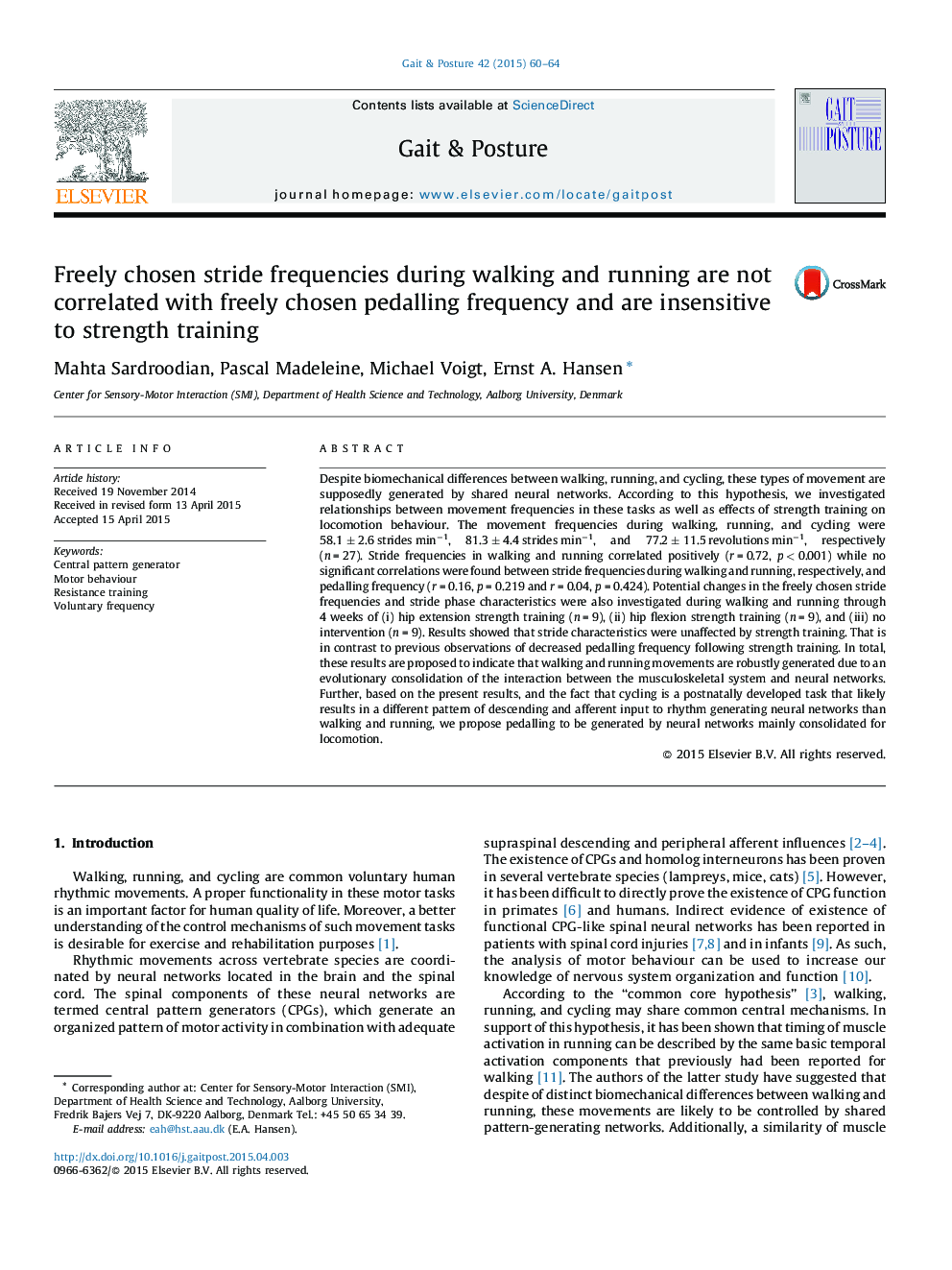| کد مقاله | کد نشریه | سال انتشار | مقاله انگلیسی | نسخه تمام متن |
|---|---|---|---|---|
| 6206059 | 1265639 | 2015 | 5 صفحه PDF | دانلود رایگان |
- Walking, running, and cycling are supposedly generated by shared neural networks.
- Stride rates in walking and running correlated positively.
- Locomotion stride rates and pedalling rate were not correlated.
- Strength training did not affect locomotion (contrasting prior results on cycling).
- Pedalling may be generated by neural networks mainly consolidated for locomotion.
Despite biomechanical differences between walking, running, and cycling, these types of movement are supposedly generated by shared neural networks. According to this hypothesis, we investigated relationships between movement frequencies in these tasks as well as effects of strength training on locomotion behaviour. The movement frequencies during walking, running, and cycling were 58.1 ± 2.6 strides minâ1, 81.3 ± 4.4 strides minâ1, and 77.2 ± 11.5 revolutions minâ1, respectively (n = 27). Stride frequencies in walking and running correlated positively (r = 0.72, p < 0.001) while no significant correlations were found between stride frequencies during walking and running, respectively, and pedalling frequency (r = 0.16, p = 0.219 and r = 0.04, p = 0.424). Potential changes in the freely chosen stride frequencies and stride phase characteristics were also investigated during walking and running through 4 weeks of (i) hip extension strength training (n = 9), (ii) hip flexion strength training (n = 9), and (iii) no intervention (n = 9). Results showed that stride characteristics were unaffected by strength training. That is in contrast to previous observations of decreased pedalling frequency following strength training. In total, these results are proposed to indicate that walking and running movements are robustly generated due to an evolutionary consolidation of the interaction between the musculoskeletal system and neural networks. Further, based on the present results, and the fact that cycling is a postnatally developed task that likely results in a different pattern of descending and afferent input to rhythm generating neural networks than walking and running, we propose pedalling to be generated by neural networks mainly consolidated for locomotion.
Journal: Gait & Posture - Volume 42, Issue 1, June 2015, Pages 60-64
